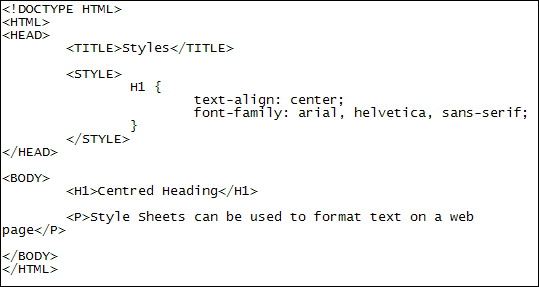Unlocking Website Awesomeness: Mastering CSS Font Family Styles
Want to transform your boring website into a visual masterpiece? It's easier than you think! Just like choosing the right outfit can make you feel confident and put-together, selecting the perfect font styles can elevate your website from drab to fab. We're talking about the magic of CSS font family styles – your secret weapon for creating a website that not only looks great but also effectively communicates your message.
CSS font family styles are the backbone of any well-designed website. They determine how your text appears – the style, the feel, the overall vibe. From the elegant curves of serif fonts to the clean lines of sans-serif, each font family brings its own personality to the table. By mastering this essential CSS tool, you can control the visual narrative of your website and make a lasting impression on your visitors.
So, what exactly are CSS font family styles? Simply put, they are CSS properties that allow you to specify the fonts you want to use for your website's text. You can define a primary font and fallback fonts in case the user's browser doesn't support your first choice. This ensures that your text remains readable and consistent across different devices and browsers.
The history of font families in web design is fascinating. Early websites were limited in font choices, relying heavily on system fonts. The introduction of CSS revolutionized web typography, giving designers unprecedented control over font selection and styling. This opened up a world of creative possibilities, enabling websites to express their unique brand identities through carefully chosen typography.
Choosing the right font family can dramatically impact your website's readability and user experience. A poorly chosen font can make your content difficult to read, frustrating visitors and driving them away. Conversely, a well-selected font family enhances readability, improves user engagement, and strengthens your brand image.
For example, using font-family: Arial, sans-serif; sets Arial as the preferred font. If Arial is not available, the browser will fall back to a generic sans-serif font.
Benefits of using CSS font family styles include enhanced readability, consistent branding, and improved user experience. For instance, using a legible font like Open Sans for body text improves readability, while consistently using a specific font family like Playfair Display for headings reinforces your brand identity.
To implement CSS font family styles effectively, start by choosing fonts that align with your brand and target audience. Use a font family stack to ensure fallback fonts are in place. Test your font choices on different devices and browsers to ensure consistency.
Advantages and Disadvantages of Custom Font Families
| Advantages | Disadvantages |
|---|---|
| Enhanced branding | Increased page load time |
| Improved aesthetics | Compatibility issues across browsers |
| Unique visual identity | Licensing costs for some fonts |
Best practices include using web-safe fonts for essential content, limiting the number of font families used on a page, and optimizing font files for performance.
Real examples include using Georgia for body text on news websites, using Montserrat for headings on modern design portfolios, and using Roboto for a clean and minimalist look.
Challenges include dealing with font licensing restrictions and ensuring cross-browser compatibility. Solutions involve using free or open-source fonts and thoroughly testing font rendering on various browsers.
FAQs: What is a font family? How do I choose the right font? What are web-safe fonts? How do I embed custom fonts? What are font fallbacks? How do I optimize font performance? How do I use Google Fonts? What are variable fonts?
Tips and tricks: Utilize font pairing tools to find complementary fonts. Experiment with font weights and styles to create visual hierarchy. Use font-face to embed custom fonts. Optimize web font loading for better performance.
In conclusion, mastering CSS font family styles is crucial for creating visually appealing and engaging websites. By carefully selecting and implementing fonts, you can enhance readability, strengthen your brand identity, and improve the overall user experience. Remember, typography is a powerful tool that can make or break your website's effectiveness. Take the time to explore different font families, experiment with various styles, and find the perfect typographic voice for your online presence. Don't settle for boring default fonts. With a little effort and the right knowledge of CSS font family styles, you can transform your website into a stunning visual masterpiece that captivates your audience and leaves a lasting impression. So, dive in, experiment, and unleash the power of typography!
Pinterest lunes inicio de semana your secret weapon for a productive week
Decoding the pisces mystique what makes this zodiac sign so enchanting and elusive
Unlock your potential mastering the ged test in spanish














